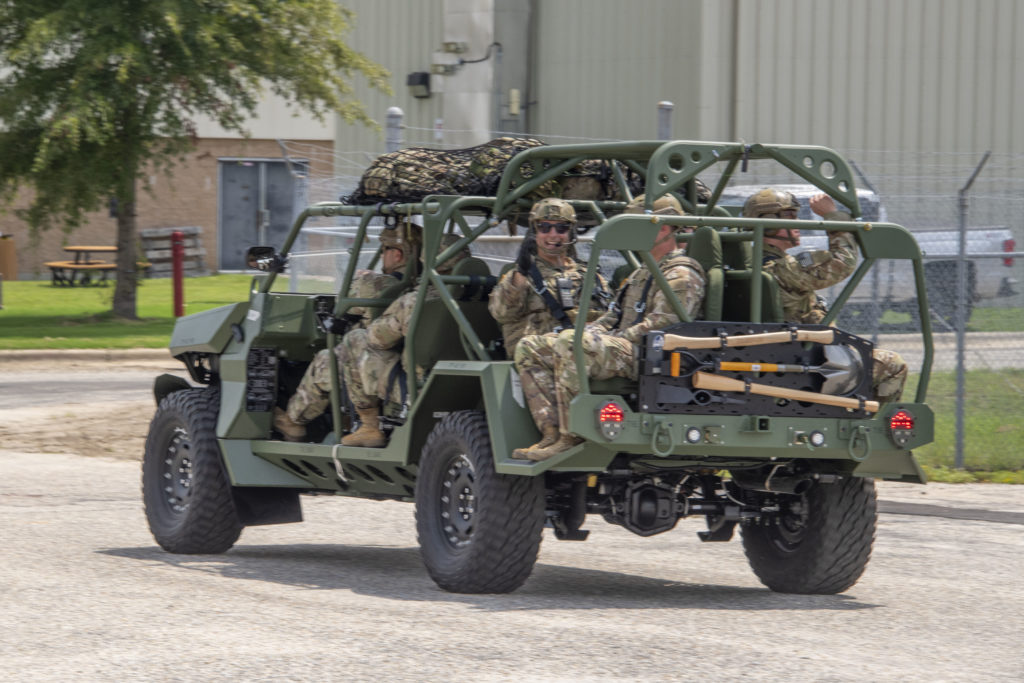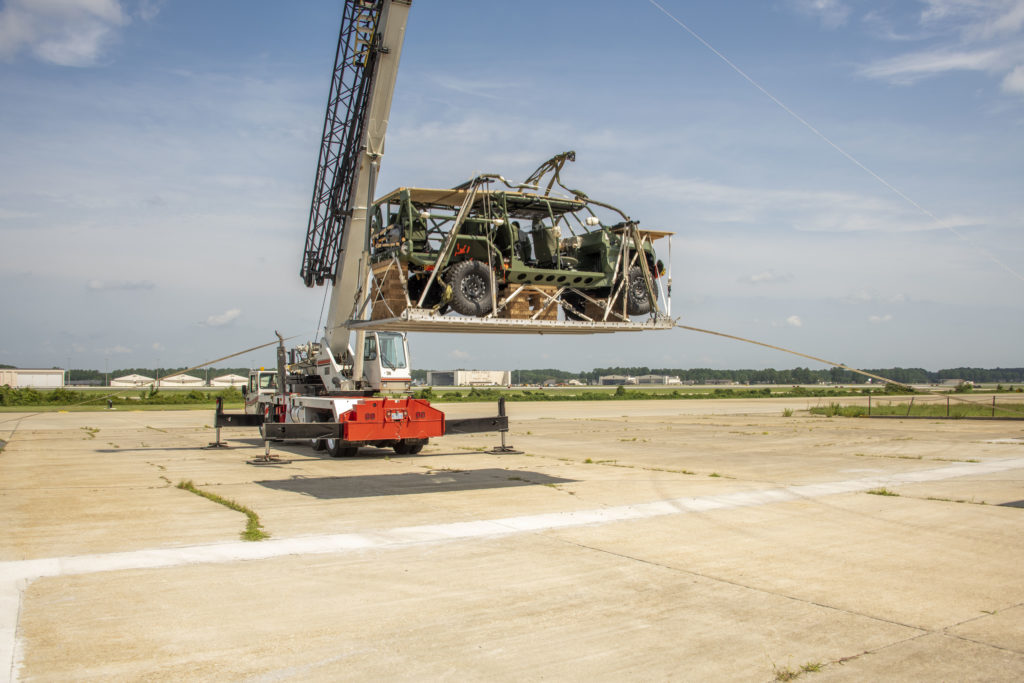By Mr. Blake Bagby, Military Test Plans Analyst, Airborne and Special Operations Test Directorate, U.S. Army Operational Test Command
FORT BRAGG, North Carolina — Airborne equipment testers here are working with aerospace engineers on modifying airdrop rigging techniques because of structural and mechanical changes made by the manufacturer of the Infantry Squad Vehicle (ISV).
“Testing centered around determining if production representative mode (PRM) ISVs could tolerate the forces experienced during low velocity airdrop operations (LVAD),” said Lt. Col. Derek Johnson, Chief of Test Division at the Airborne and Special Operations Test Directorate (ABNSOTD).
The ISV is a new concept to allow Army Infantry Brigade Combat Team Soldiers to cover large areas of challenging terrain more quickly and less fatigued by reducing the area usually covered on foot.
Infantrymen would also be able to carry enough personal and squad provisions to self-sustain for several days, and the ISV is also transported easily by air assets during air assault and airborne assault missions.
The U.S. Army Combat Capabilities Development Command Soldier Center in Natick, Massachusetts assisted ABNSOTD in modifying the ISV rigging procedures and paperboard honeycomb kit to accommodate changes to the production representative model of the ISV by General Motors Defense.
“This capability is required across the range of military operations facing Infantry Brigade Combat Teams conducting crisis response, initial entry, and selected decisive action missions,” said James Cochran (JC), a seasoned Military Test Plans Analyst within ABNSOTD.
Johnson said the changes were deemed necessary after a previous version of the ISV encountered material problems during developmental testing when it was discovered some vehicle components were insufficiently ruggedized for long term vehicle service.
Testing started with a rigging exercise of two PRM ISVs on one standard Type V low velocity airdrop operations (LVAD) platform and one Dual Row Airdrop System platform.
Once rigging solutions and paperboard honeycomb modifications were incorporated into the rigging procedures, both vehicles underwent Simulated Airdrop Impact Testing (SAIT).
The two PRM ISVs rigged on airdrop platforms were raised by crane and free dropped to simulate the impact velocity experienced during LVAD operations.
“During the execution of the SAITs, high-speed video, photography, and instrumentation (accelerometers and impact data recorders) were employed to assess the PRM ISV’s reaction to the forces experienced during LVAD operations,” said Michael Estremera, Electronics Engineer at ABNSOTD.
After SAIT, both vehicles were thoroughly inspected by ABNSOTD, General Motors Defense, and the ISV Program Office to see if either ISV had any damage from forces experienced during the simulated drop.
The testing culminated with a 50-kilometer road test, with ABNSOTD personnel operating the PRM ISVs on improved, semi-improved, and un-improved roads as well as off-road routes at various speeds.
Following road testing, ABNSOTD, General Motors Defense and ISV Program Office personnel thoroughly inspected both vehicles to assess any damage the vehicles may have sustained.
This follow-on testing generated data on the ability of a PRM ISV to withstand the forces experienced during LVAD operations and remain fully mission capable.
“Operating the ISV is a great experience from the driver’s point of view,” said Staff Sergeant Clinton Martinez, an ABNSOTD Parachute Rigger. “It rides smoothly over all types of terrain and visibility is outstanding.”
“The speed and maneuverability of the ISV, along with its capability to easily negotiate all types of terrain should impart confidence in the Infantrymen that will be utilizing this vehicle in real world and training operations,” said Sgt. 1st Class Marcus Love, an Infantryman assigned to ABNSOTD.”
The ISV is deployable worldwide by sea, air, and land to support strategic deployment and operational maneuver in accordance with Army and Joint doctrine.
~~
About the U.S. Army Operational Test Command:
The U.S. Army Operational Test Command is based at West Fort Hood, Texas, and its mission ensures systems developed are effective in a Soldier’s hands and suitable for the environments in which they train and fight. Test unit Soldiers provide feedback by offering input to improve upon existing and future systems Soldiers will ultimately use to train and fight.
The Fort Bragg, North Carolina-based Airborne the Special Operations Test Directorate (ABNSOTD) plans, executes, and reports on operational tests and field experiments of aerial delivery and air transportation equipment and procedures for airborne and special operations forces to provide key operational data for the continued development of doctrine and fielding of equipment to the Warfighter.


